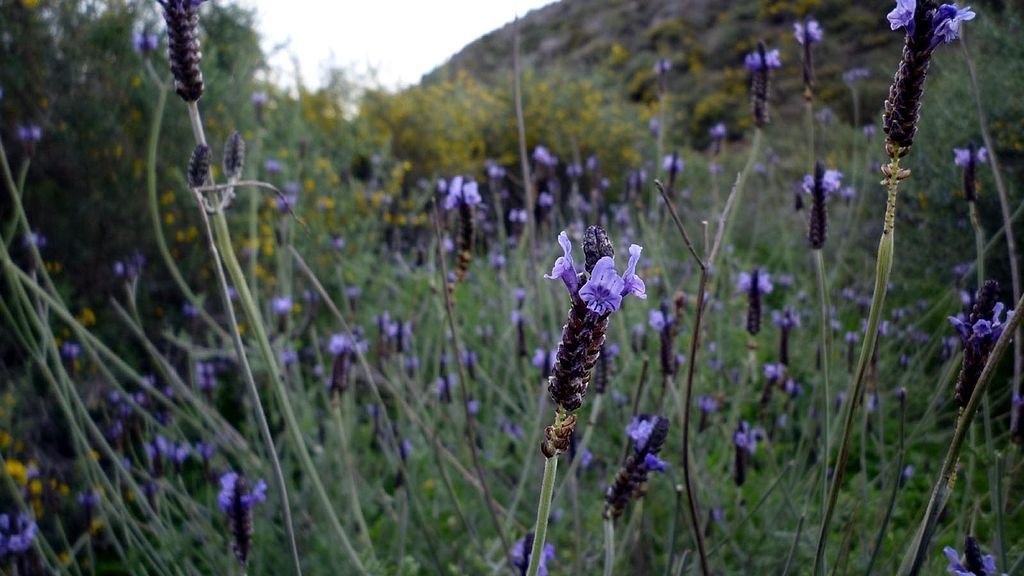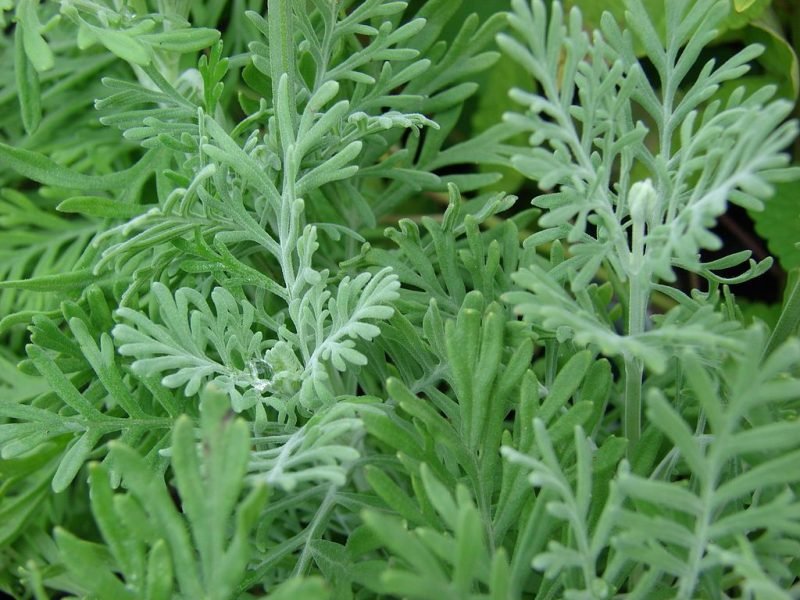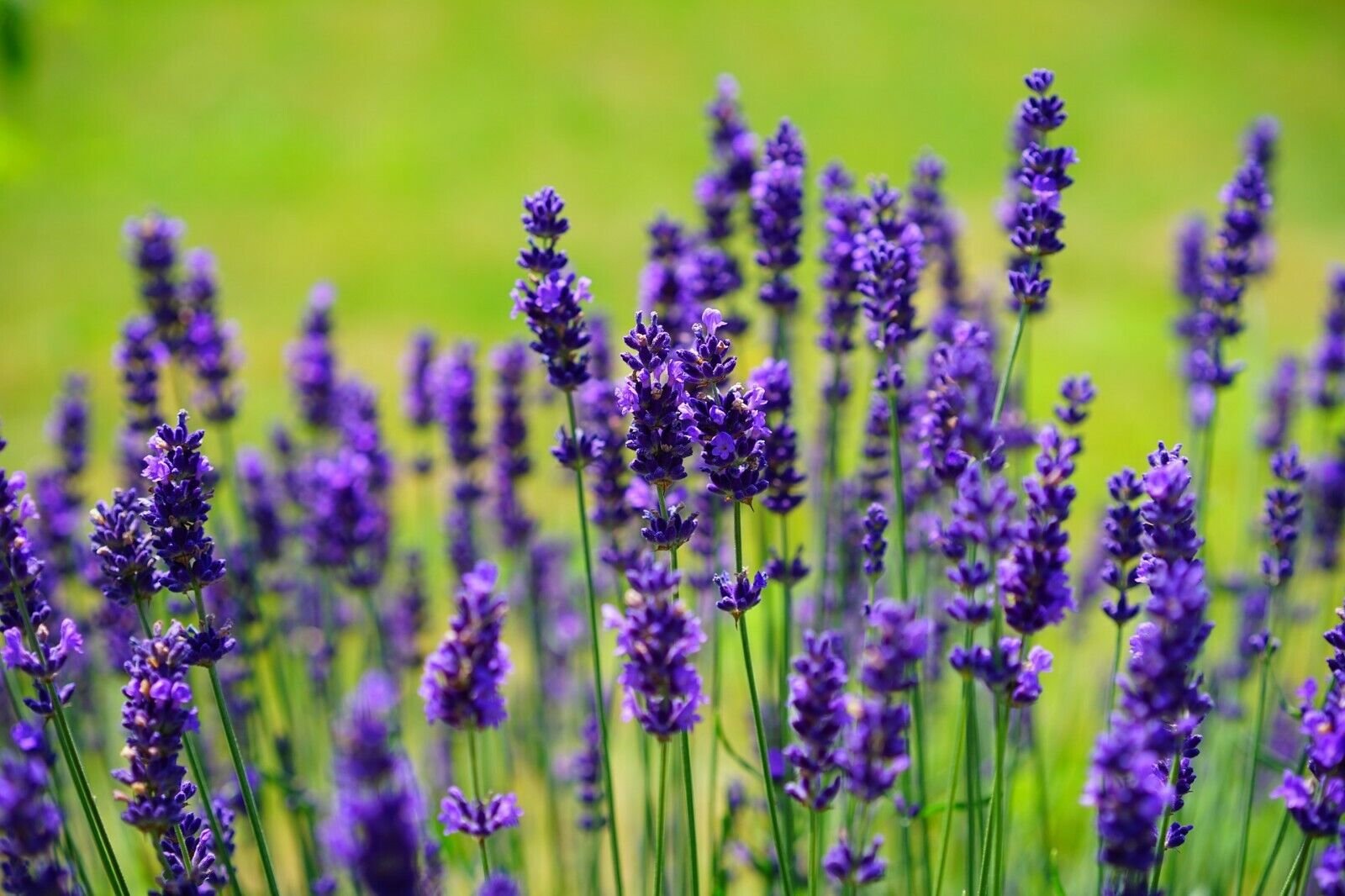The icy blast of winter-mint fragrance makes this a lavender you won’t forget. Silvery gray, ferny foliage and spikes of steely lavender-colored blooms give this edible ornamental a frosted look. The fragrance is an intoxicating mix of cool mint infused with traditional lavender! We love to tuck these tidy, 2.5-foot-tall plants into mixed container plantings, landscapes, and cottage gardens to add a touch of frosty elegance.
Lavender (Torch Minty Ice)
| Common Names or AKA Names: |
|
| Botanical Name: | Lavandula multifida |
| Family: | Lamiaceae |
| Plant Type (Zone 8b): | Perennial |
| Hardiness Zones: | Zones 7 through 10 |
| Mature Size: | 15″ – 20″ inches tall, 12″ – 18″ inches wide |
| Native Area: | Mediterranean Region and North Africa |
| Bloom/Harvest Time: | Summer Bloomer | June to August |
| Sun/Light Exposure: | 6 to 12 hours of Light. |
| Planting Depth: | Surface Sow |
| Soil Preferences: | Compost & Well-Drained Soil |
| Soil pH: | 7.5 |
| Aquaponically-Friendly: | YES | LEARN MORE |
| Hydroponically-Friendly: | YES | LEARN MORE |
DESCRIPTION:
Lavandula multifida, also known as lavender fern, is a perennial herb in the family Lamiaceae. It is native to the Mediterranean region and North Africa. The plant grows to 12″–24″ inches tall and has blue-violet flowers. The leaves are aromatic and have a fern-like appearance. This isn‘t just any other ordinary lavender variety, limiting to herbal uses, though. It’s a woody shrub that can be used as a low hedge, border, or edge. Grow it in clumps for visual interest and garden fragrance. In warm climates, it will produce pretty flowers year-round.
USE:
This versatile garden perennial can be used in a number of ways, not just relegated to a corner of the herb garden. Its deep purple-blue flowers and gray-green leaves provide ornamental color and contrast to the perennial border front, rock garden, cottage garden, herb garden or scented garden. It can be particularly effective when massed. Good selection for edging along walks or paths. Excellent cut or dried flower. Herb garden plants can be used in a variety of ways including (1) adding leaves as flavoring to food dishes, (2) using oil from stems and leaves for its anti-septic properties (external applications to wounds, bruises, and insect bites), (3) drying flowers to add to drawers of clothing as insect repellents, and (4) making potpourris.
Culture & Cultivation:
This species of lavender is hardy to USDA Zones 7-10 and typically thrives in full sun with average, alkaline, dry to medium, well-drained soils. It is best to grow this lavender in sheltered locations with a good winter mulch in Zone 8 or lower. Full sun and well-drained soils are especially important for this plant’s success. Cool, moist conditions often lead to root rot and stem rot, so soil drainage is particularly important in winter months. Remove faded flowers to promote continued bloom and maintain plant appearance. Prune to shape in spring after new leaves appear. This species differs from most other types of lavender by having a much better tolerance for summer heat and humidity and by preferring moister soils with some organic enrichment. North of Zone 8, plants may be grown in pots/containers that are overwintered indoors in sunny locations. Plants are fast growing and may be grown as annuals with seeds started indoors 6-8 weeks before the last spring frost date.
If you want to learn more about cultivating this specific plant, you might want to check out our online courses where we have plant specific mini courses in addition to our standard fully packed courses and master gardening courses.
Planting & Care:
Lavender grows best in soil with good drainage and some organic material. Water lavender only during periods of drought, or when the plant is first getting established. To encourage more blooming, remove spent flowers from the plant. Prune lavender shrubs in spring, just as new leaves are starting to grow.
Egyptian lavender (Lavandula multifida) is not a demanding plant regarding the type of soil and can grow in chalk, loam or sand.
The chalky soil is pale and contains chunks of calcium-rich rock. It is a fertile and well-draining soil, almost always alkaline.
The loam soil is dark, rich in organic matter but balanced in minerals. It offers the best of all worlds, retaining enough water for the plants, but allowing excess moisture to drain away. This is the most desired type of garden soil, perfect for most plants.
Sandy soil is light, porous and very easy to drain. It is a soil poor in organic matter and nutrients. It is composed of relatively large mineral particles that allow water to drain quickly.
As for pH, it is a plant that grows ideally in soils with pH alkaline or neutral.
Regarding drainage, Lavandula multifida likes to grow in well drained soil.
Growing new plants can be difficult at times but not to worry Green Grass Grove Academy is here to help! We are excited to offer Online Courses on plant care and other Gardening and Homesteading Courses. Our goal is to provide you with the knowledge and skills necessary to become a successful gardener. Our Online Courses are designed to be self-paced and to be completed at your convenience. Courses contain invaluable information to help you become the ultimate Gardener! In addition, Our Courses have entertaining multimedia, quizzes, and a final exam to test your knowledge. Upon completion of each course, you are eligible to receive a certificate of completion. Some of our most popular courses include Aquaponics/Hydroponics, Plant Pathology, Seeds & Seedlings, Microgreens, Plant Mini-Courses, and Insect Pest & Nutrients Management.
So what are you waiting for? Come on over to Green Grass Grove Academy and let us help you become the ULTIMATE GROWER!
Watering:
When watering lavandula multifida, it is important to make sure that the soil is evenly moistened. To do this, water the plant at the base until the water begins to run out of the drainage holes in the bottom of the pot. Allow the plant to drain thoroughly before returning it to its growing location.
Harvesting:
Lavandula multifida can be harvested starting in early summer when the plant begins to bloom to late fall. To harvest the plant, cut back the plant to about 6 inches above ground level. You can then either dry the plant material for later use or extract the essential oil from it. To dry the lavender by hanging it upside down in a cool, dark place or by placing it on a screen in a well–ventilated area. To extract the oil, you will need to use a solvent such as hexane. Then, the lavender oil can be used in a diffuser or diluted with carrier oil and applied topically.
Aphids | Whiteflies | Spider Mites
Take Our Online Insect Pest Management Course to become an expert at dealing with these pests and others too!
Learn More About This Plant!
- Lavandula multifida is used in traditional medicine for its purported anti–inflammatory, analgesic, antispasmodic, sedative, and anxiolytic effects. It is also used as an insecticide and fragrance ingredient.
- The chemical composition of Lavandula multifida essential oil includes linalool, camphor, limonene, terpinen–4–ol, α–terpineol, β–ocimene, geraniol, 3–octanolide, eucalyptol (1), cis–ocimene (2), trans—ocimene (3), γ—terpinene (4), α—terpinene (5), piperitone oxide (6), sabinene hydrate (7), 1—8 cineole (8), α—humulene epoxide II(9).
- Lavandula multifida is a member of the mint family, which includes over 7,000 species. The plant is thought to have originated in the Mediterranean region and North Africa. It has been used medicinally for centuries and was even mentioned in the Ebers Papyrus, an ancient Egyptian medical text dating back to 1550 BC.
- Lavender fern is most commonly used for its purported anti–inflammatory, analgesic, antispasmodic, sedative, and anxiolytic effects. The essential oil of Lavandula multifida contains natural chemicals that are thought to contribute to these effects. For example, linalool is known to have sedative properties while camphor has been shown to have pain–relieving effects.
- Lavandula multifida is also popular as a natural insecticide and fragrance ingredient due to its strong scent. The plant‘s leaves are often used in potpourri or sachets.
The information in this post is NOT medical/nutrition advice, as we are not doctors or nutritionists. This information is for informational/entertainment purposes only and is not a substitute for professional medical advice, nutrition advice, diagnosis or treatment. If you have any concerns or questions about your health or nutrition intake, you should always consult with a doctor or other licensed and qualified healthcare professional.
Green Grass Grove Plant Profiles
No posts found!






